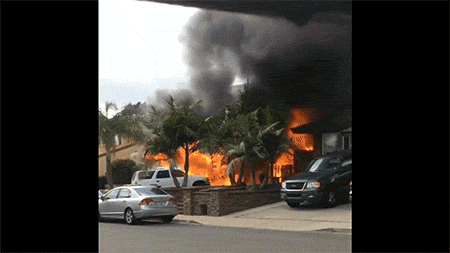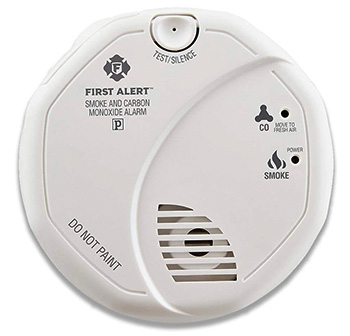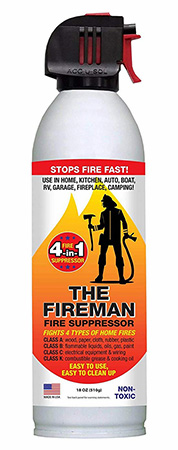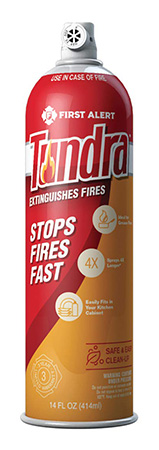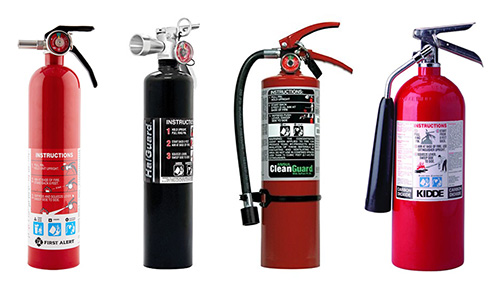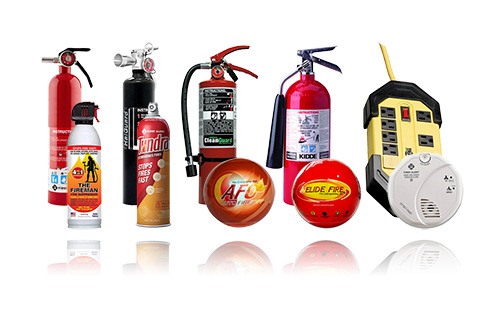by Sirius Fourside
Table of Contents
Introduction: Iron-Clad Fire Prevention
How to Fire-Proof Your Grow Room
- Smoke Detectors
- Extinguisher Balls
- Hanging Type Extinguishers
- Aerosol Extinguishers
- Handheld Extinguishers
We’ve all seen it way too many times by now: a news story where some “careless pot farmer” accidentally burns their own house down. In a few cases, they accidentally burn down someone else’s house, too.
Some of these cases really are people who’ve turned a rented house into a cannabis grow operation. But some cases, like this one, are especially sad because when you look at pictures of the plants it’s obvious the grower was growing for personal use. Not only did they lose their home, their weed, and all their growing equipment, but they likely lost their freedom, too.
A beautiful home in San Diego up in smoke. FYI: Median house prices in San Diego are over $480,000 ?
Image credit: Fox5 San Diego
What makes this all especially painful is that many of these fire-related accidents can be prevented for cheap and with very little work.
Today, we’re quickly going to teach you how to make it so your grow room is the most fire-safe room in the house. Follow these instructions and not only will you prevent fires, but you’ll prevent yourself from accidentally showing up on the evening news.
Note: Some fires aren’t caused by grower negligence at all, but rather by faulty equipment. Every grower should observe good fire safety protocols because sometimes, even a fan can start a house fire. Thanks to grower “Toff” for pointing out this Reddit post which was the inspiration for this article. Shout out to r/microgrowery! ???
Preventing Fires
An ounce of prevention is worth a pound of cure. At this point, you’ve probably heard the phrase so much that it seems cliché. However, it’s as true today as it is when you first heard it. If you take steps to prevent fires in the first place, there’s a good chance you’ll never need the second half of this article. I hope you never need to fight a fire in your lifetime and this next section will help make that a reality.
General Tips:
- Keep a tidy grow room – Not everything in your grow room can start a fire and some things won’t ignite even when they touch fire. But certain things (like dry leaves, a towel with lots of lint, or Styrofoam from a newly opened product) just need a small flame to ruin your year.
- Keep plugs, ballasts, and other electronics away from water – this goes for everyone since we all have to water our plants, but it’s especially important for hydro growers.
- When possible, keep plugs, ballasts, and other electronics off the ground – This greatly reduces the chances of them coming into contact with water.
- Don’t overload your circuits – Each plug in your house is on a “circuit” and that circuit can only handle a certain amount of electricity. To find your limit, go to your power box (aka breaker box) which is where you can shut down all your lights. Find the breaker that corresponds to your grow room and note the number of amps. Stay below these wattages:
- 1444W on 15A circuit breakers
- 1920W on 20A circuit breakers
- 2880W on 30A circuit breakers
Read a more in-depth explanation of amps, watts, and circuit breakers
GFCIs:
GFCI stands for “Ground Fault Circuit Interrupter”. GFCIs automatically stop the flow of electricity once it senses that there’s “current leakage”. Current leakage means electricity is going somewhere it’s not supposed to which usually equates to a person being electrocuted, a pool of water being electrified, or a fire being started. You can install an outlet with built-in GFCI capability, or you can get power strips with built-in GFCIs (so there’s no need to change out your outlets). If you decide to go with a GFCI power strip, make sure to get one with decent amperage (15+ amps) like the one in the picture below; a low-amperage power strip can’t handle grow lights and other devices at the same time.
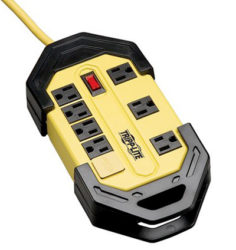
Stopping Fires: How to Fire-Proof Your Grow Room
It would be great if we could prevent 100% of fires, but some may occur no matter how careful you are as a grower. Life happens. Even good devices from reputable companies can fail and leave you to deal with the aftermath. In those cases, it’s best to be ready. If you’re prepared enough, you won’t have much reason to worry.
Smoke Detectors
You probably already have smoke detectors in your house, but if you don’t, please go get a few today. They warn you when there’s fire so you can get out of your house and call the fire department. If you’re warned early enough and there isn’t an immediate danger, you could put out the fire yourself. You can get a cheap smoke detector to put in your grow room for under $30. If the smoke detector goes off in your grow room, you know there’s a problem because not many things in a grow room make smoke. Get one for near your kitchen, too, if you don’t already have one 🙂
Don’t forget a fire alarm, of course!
Extinguisher Balls
Preventing a fire in your grow room is the way to go. But when it comes to stopping fires already in progress, extinguisher balls are the next level of protection. You place them in a room nearest to where fires are most likely to start. When the balls sense fire (through high heat), they burst open and shower the immediate area in a fire-retardant powder. That means the fire goes right out and can’t start again.
Extinguisher balls don’t need to be mounted to a wall (though they can). You can set them on the ground next to higher-risk outlets (power strips or outlets with high, continuous use).
It’s important to note that extinguisher balls use “ABC Dry Chemical” (monoammonium phosphate). ABC dry chemical is fantastic at putting out fires; it’s what’s in standard fire extinguishers. However, the powder is messy, smelly, and hurts electronics. However, since even the most expensive LEDs cost a lot less than a house and infinitely less than your life, the powder is worth dealing with if the need arises.
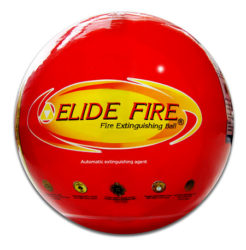
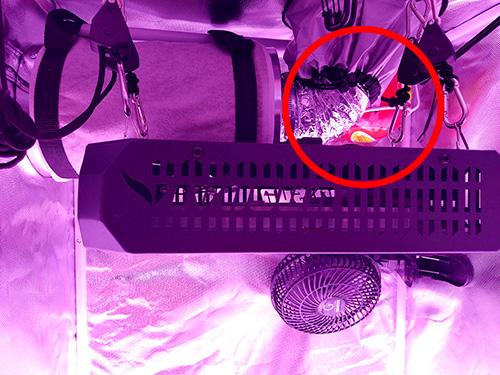
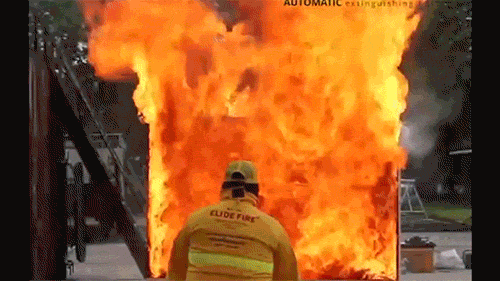
Hanging Type Extinguishers
When Nebula and I first started growing in 2008, this was the greatest technology out in terms of automatic fire extinguishing. There were a few different variants of this style, but they all worked similarly to each other. Essentially, you would mount this automatic extinguisher on a wall, and it would spray the area with a fire-retardant powder.
These days, extinguisher balls are a lot more popular and more widely available. You can still find Hanging-type extinguishers in the UK, but in the US they’ve pretty much disappeared. Their disappearance was probably caused by a combination of the extinguisher balls being cheaper, lighter, and their lack of a need to be mounted to a wall or ceiling.
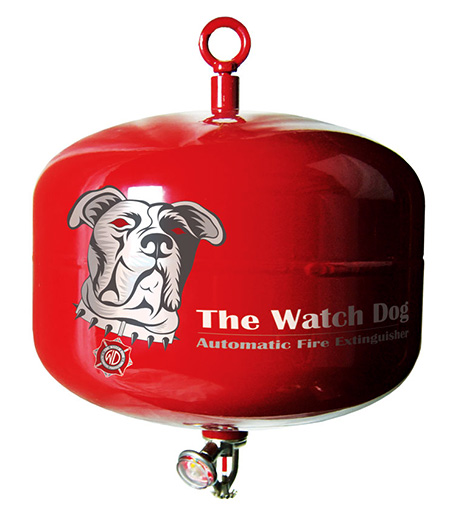
Aerosol Extinguishers
Think of aerosol extinguishers as a little fire extinguisher in a can…because that’s what they are. This type of product is about the size of a can of pest-killer and they usually offer 20+ seconds of spraying ability. The quality of the product can vary between companies as they use different flame-retardant recipes, but the good ones have been proven to work.
Aerosol extinguishers are good to have all over your house because they’re so convenient, but you shouldn’t look at them as a sole way to fight fires since they do spray a relatively small area compared to extinguisher balls or handheld extinguishers. Still, many people have had their homes saved by this type of product, so having a single one near the entrance of your grow room certainly can’t hurt.
Two brands of effective aerosol extinguishers: Fireman and Tundra
Handheld Extinguishers
These are the big guns. Handheld fire extinguishers are the type we all think of when you hear the term fire extinguisher. Most of the ones you see use ABC dry chemical, so they’re great at stopping fires even though they leave a huge smelly mess in their wake. They don’t spray for very long, but they have more fire-stopping power than anything else on this list. For that reason alone, it’s a good idea to have one of these somewhere in your house.
As I said before, ABC fire extinguishers leave a big mess. A mess is preferable to a burned-down house, but it still means that you could be left with a tent full of unusable weed and damaged electronics. If that ever happens (fingers crossed it won’t), hopefully, you’re filled with a renewed appreciation for your life and home. However…
You can also get handheld extinguishers that don’t leave any residue or chemicals at all. That means you could put out a fire occurring directly in your tent and still be able to use all the weed since it doesn’t have any fire-retardant chemicals. This type of extinguisher won’t hurt your plants, lights, or electronics, but they definitely will hurt your bank account as they cost way more than a standard extinguisher.
A few types of effective extinguishers: Normal (ABC), and clean extinguishers (for example filled with HCFC-123 or CO2). Clean extinguishers don’t leave a residue and are safe for electronics, but cost a lot more.
Fire-Proofing Gear
Okay, this is the round-up. Here are all the items we mentioned earlier accompanied by a quick description and a link to the item on Amazon.com:
- GFCIs
- Any GCFI will work, but we like this one because it has so many plugs and the plugs are spread apart nicely
- Tripp Lite 8 Outlet GFCI Safety Power Strip
- Smoke Detector
- Make sure to get a dual-sensor smoke detector; they can sense fires faster and warn you earlier than a cheaper sensor
- First Alert Smoke Detector
- Extinguisher Balls
- There aren’t many players in this market, so you’ll have to make a tough choice. The well-known brand, or the lesser-known brand that costs 1/3 of the price…
- Elide Fire Ball – Self Activating Fire Extinguisher (brand name)
- AFO Fire Ball – Self Activating Fire Extinguisher (generic)
- Hanging Type Extinguishers
- These are hard to find in addition to being expensive. I’d go with another option.
- Aerosol Extinguishers
- These (like the handhelds) are meant to be a quick effective defense again small fires. Don’t get these to the exclusion of a true handheld extinguisher.
- Fire Extinguishing Suppressant Spray
- Tundra – Fire Extinguishing Aerosol Spray
- Handheld Extinguishers
- Handheld extinguishers are probably the most effective way to stop a fire without a firehose, so it’s a good idea to have one around especially if you’re a grower! The “normal” ones (ABC extinguishers) are cheap but leave a mess. The more expensive ones (clean extinguishers) don’t leave a mess and are safe for electronics, but they will karate chop your wallet in half.
- First Alert Standard Home Fire Extinguisher (cheap, effective, messy, a bit smelly)
- Amerex B385TS with HCFC-123 Fire Extinguisher (much cleaner spray, also cleans out your wallet)
- Amerex 322 with Carbon Dioxide, Food/Electronic/Environmentally Safe Fire Extinguisher (safe for everything except bank accounts)
Conclusion
That’s a whole ton of fire-fighting information you just read and I hope it helps you to set up a fire-proof grow room. We don’t want to see any other growers on the news with their homes smoldering, and we especially don’t want to see anyone going to jail after suffering through something like that.
Is there a better tool we don’t know about, or did we miss a tip that could help growers stay more fire safe? Let us know!

